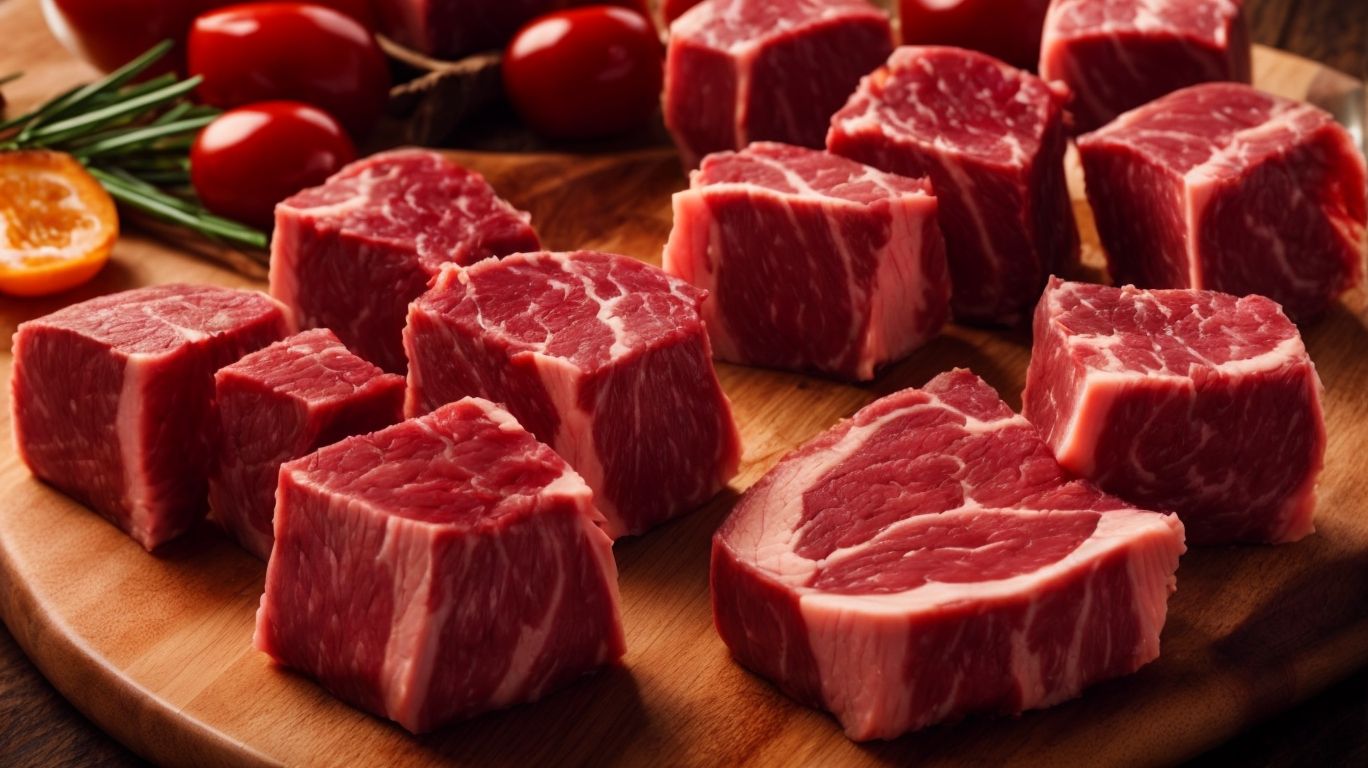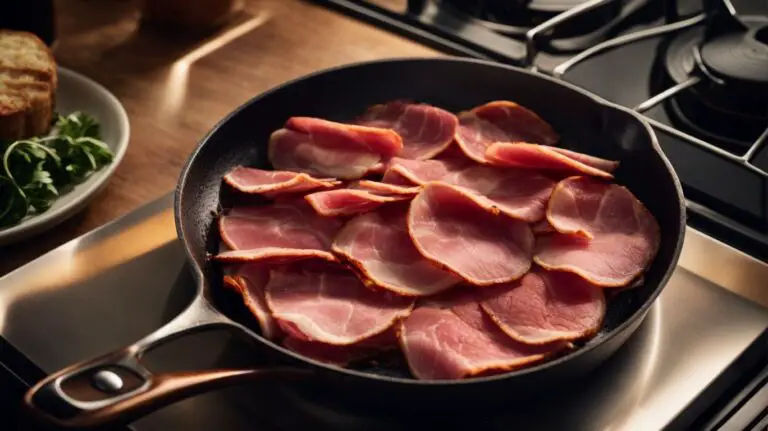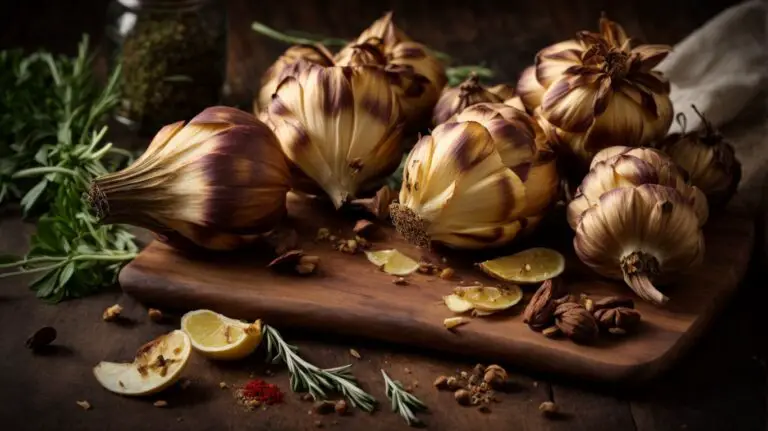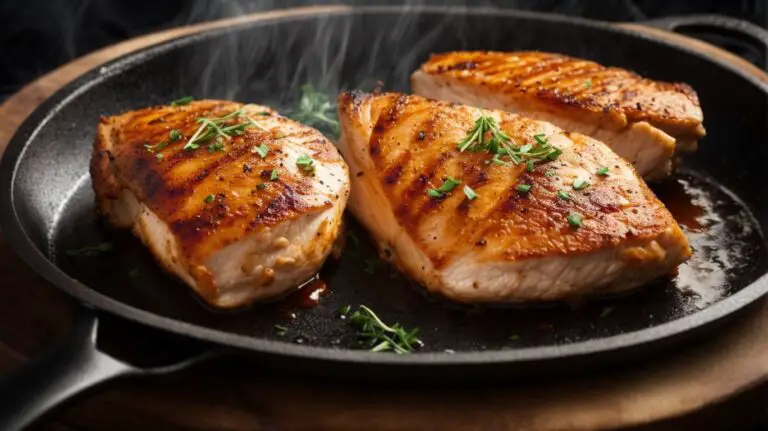How to Cook Steak Cut Into Cubes?
Are you looking to elevate your steak game and try something new in the kitchen? Steak cut into cubes may just be the answer you’re looking for.
In this comprehensive guide, we’ll cover everything you need to know about cooking steak cut into cubes – from choosing the right cut of steak to marinating techniques and cooking methods.
Whether you prefer grilling, sautéing, or braising, we’ve got you covered. Stay tuned for tips and tricks on how to cook perfect steak cubes and serve them up for a delicious meal. Let’s get cooking!
Key Takeaways:
What is Steak Cut Into Cubes?
Steak Cut Into Cubes refers to the process of slicing sirloin steak into bite-sized pieces, commonly known as steak bites, to create a delightful dish.
By cutting the steak into cubes, you enhance its versatility in cooking. These tender and flavorful steak bites can be used in a myriad of recipes, from sizzling stir-fries to hearty stews. One of the key advantages of using steak bites is their quick cooking time, making them ideal for busy weeknight dinners. The smaller size of the cubes allows for more even marinating, ensuring that each piece is infused with flavor . The uniform shape of steak bites ensures consistent cooking results, be it on the grill, stovetop, or oven.
Why Cook Steak Cut Into Cubes?
Cooking Steak Cut Into Cubes offers a convenient and flavorful way to enjoy tender and juicy bites of sirloin steak, especially when seared in a skillet with garlic butter.
Skillet searing with garlic butter not only adds a rich and savory flavor to the steak but also helps in achieving that perfect caramelized crust on the outside while keeping the inside tender and succulent. This method allows for quick cooking, making it ideal for busy weeknights or when you want a delicious meal without a lot of prep time.
The combination of the high heat from the skillet and the garlic butter creates a mouthwatering aroma that will have your household eagerly anticipating dinner. Searing steak bites helps to lock in the natural juices, resulting in a flavorful and moist final dish.
Choosing the Right Cut of Steak
Selecting the appropriate cut of steak, such as sirloin, is crucial for preparing delectable steak bites infused with garlic butter, ensuring a savory and satisfying culinary experience.
In terms of crafting an exceptional dish like steak bites with garlic butter, quality meat selection cannot be overstated. The sirloin cut, known for its balanced flavor and tenderness, serves as an ideal choice due to its rich marbling, which enhances both taste and juiciness.
By opting for a well-marbled sirloin steak, you elevate the dish’s overall taste profile, as the intramuscular fat melts during cooking, imparting a luxurious mouthfeel and depth of flavor.
What Are the Best Cuts for Cubed Steak?
In terms of preparing steak bites, opting for tender and flavorful cuts like sirloin steak is paramount to ensure a delightful dining experience filled with juicy goodness.
While sirloin steak is a popular choice for its balance of tenderness and rich beefy flavor, other cuts like ribeye or flank steak can also work wonders in creating succulent steak bites.
Experimenting with different marination techniques can further enhance the taste profile – whether it’s a classic garlic and herb rub or a balsamic glaze for a tangy touch.
Each cut brings its unique quality to the dish – sirloin offering a lean bite, ribeye boasting marbling for extra juiciness, and flank steak adding a robust flavor perfect for grilling.
How to Properly Cut the Steak into Cubes?
Cutting the steak into bite-sized cubes ensures even cooking and succulent juiciness when seared in a cast iron skillet and drizzled with flavorful garlic butter sauce.
Ensuring the steak is cut into uniform cubes is crucial for keeping the meat tender and maximizing flavor absorption. This technique not only speeds up the cooking process but also guarantees a consistent texture across each piece.
When the steak is sliced into uniform cubes, it allows for a uniform searing process, creating a beautifully caramelized exterior while maintaining a juicy interior. This preparation method enhances the overall dining experience, offering a perfect balance of tenderness and flavor in every bite.
Marinating the Steak Cubes
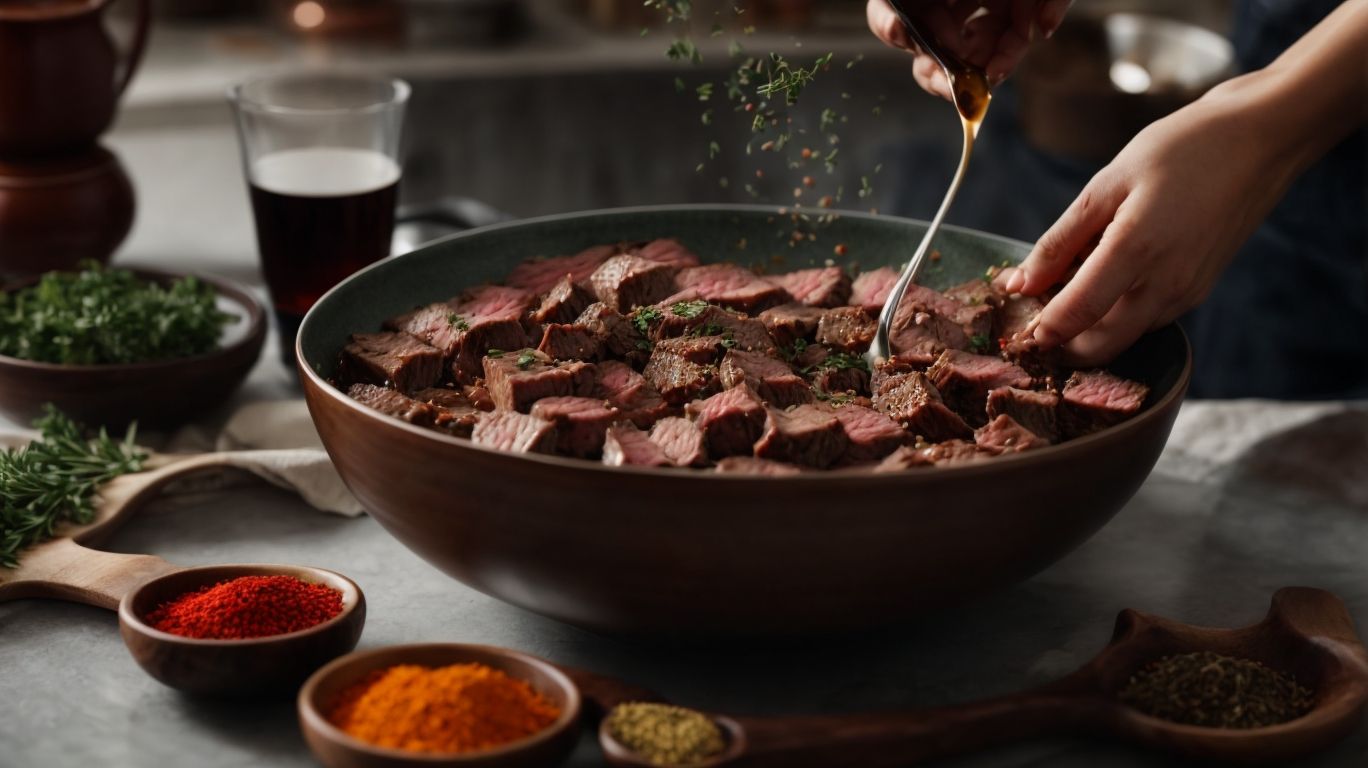
Credits: Poormet.Com – Eugene Jones
Marinating the steak cubes in a mixture of garlic, olive oil, salt, and pepper enhances the flavors and tenderizes the meat, creating a delectable base for the final dish.
Garlic infuses a rich aroma into the steak, while the olive oil helps in locking in moisture, keeping the meat juicy. The salt not only seasons the steak but also helps in breaking down tough fibers, resulting in a more tender texture. The pepper adds a subtle kick to complement the other flavors. Allowing the steak to marinate for an adequate amount of time allows these ingredients to work their magic, transforming a simple cut of meat into a mouthwatering delicacy.
Why Marinate the Steak Cubes?
Marinating the steak cubes with a flavorful blend of ingredients, such as garlic butter, enhances the taste, texture, and overall palatability of the dish, elevating the dining experience.
When steak cubes are allowed to sit in a marinade, especially one rich in garlic butter, the flavors have time to penetrate the meat, leading to a more succulent and tender outcome. This process not only adds depth and complexity to the taste but also helps in tenderizing the steak, making each bite more enjoyable. The butter in the marinade aids in creating a caramelized crust when the steak is cooked, adding a delightful contrast in textures that further enhances the overall sensory experience.
What Are Some Good Marinade Options?
Exploring various marinade options, including garlic butter, olive oil, kosher salt, and black pepper, can provide a flavorful and aromatic base for marinating steak cubes.
Each marinade option brings its unique flavor profile to the table. For a rich and savory taste, a garlic butter marinade can infuse the steak cubes with a luxurious, buttery essence. On the other hand, olive oil adds a subtle fruity note and helps tenderize the meat. When combined with kosher salt and black pepper, the marinade creates a harmonious blend of savory and peppery flavors that tantalize the taste buds. Experimenting with different ratios of these ingredients can elevate the overall taste experience of the marinated steak cubes.
How Long Should You Marinate the Steak Cubes?
Determining the ideal marinating duration for steak cubes, whether with garlic butter sauce, parsley, or other seasonings, plays a crucial role in maximizing flavor infusion and tenderness.
Each ingredient contributes to the overall taste profile of the dish. The garlic butter sauce adds richness, while parsley provides a fresh, herby note. Combining them thoughtfully imparts layers of flavor. Allowing the steak cubes to marinate for an appropriate duration allows the meat to absorb the flavors, resulting in a more flavorful and tender final product. The marination process softens the meat fibers, making it more succulent and juicy when cooked.
Cooking Methods for Steak Cubes
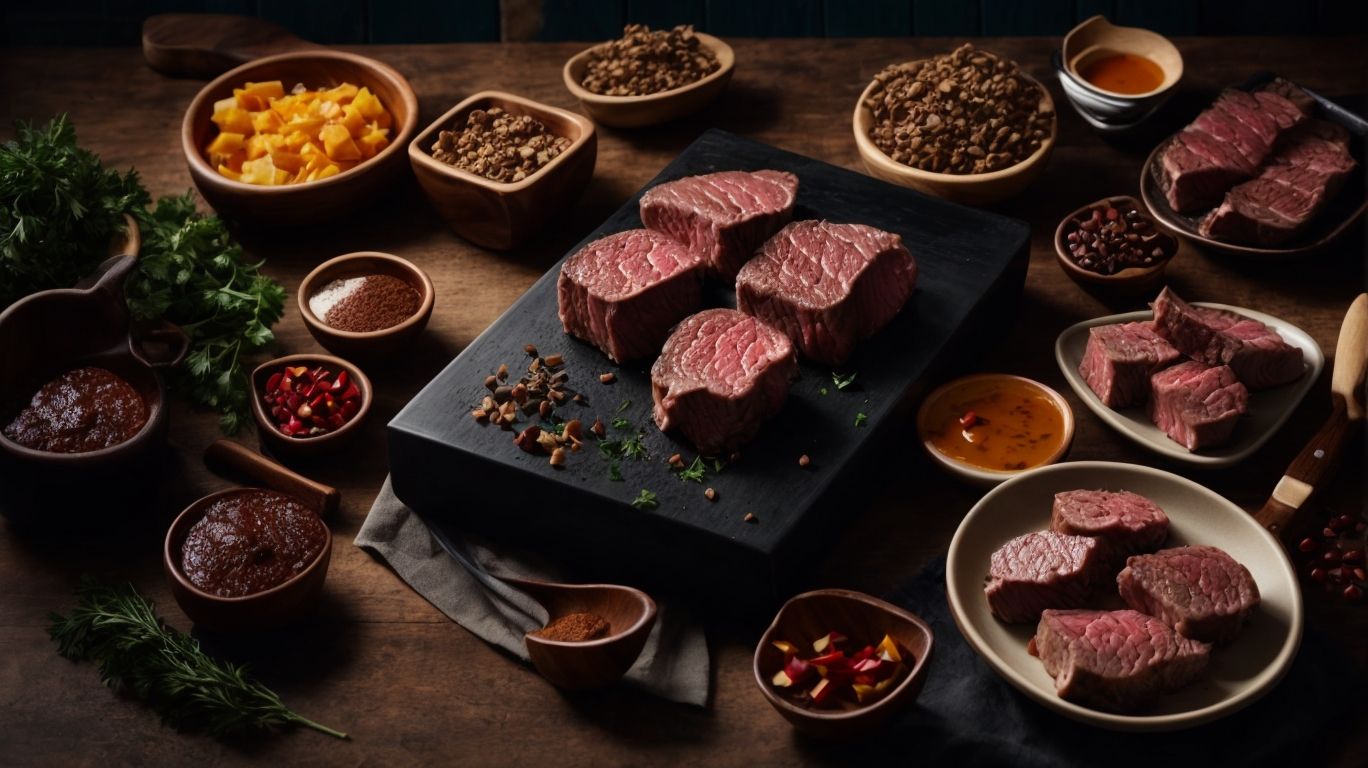
Credits: Poormet.Com – Steven Mitchell
There are multiple cooking methods for preparing steak cubes, with popular options including searing in a skillet with garlic butter for an easy and flavorful culinary experience.
Another technique that works well for steak cubes is grilling them on skewers with a medley of colorful vegetables, creating a delicious and visually appealing dish. For those looking for a quicker option, stir-frying the steak cubes with a mix of soy sauce and honey can bring out a sweet and savory flavor profile. Marinating the steak cubes in a blend of herbs and olive oil before roasting them in the oven can result in tender and succulent meat. Experimenting with these various methods allows you to discover the perfect way to serve up tender and flavorful steak cubes.
Grilling the Steak Cubes
Grilling steak cubes, seasoned with olive oil, salt, and pepper, imparts a smoky flavor and enticing char, elevating the texture and taste of the succulent sirloin bites.
When preparing these delectable steak cubes, it’s crucial to let the meat marinate in the seasonings for at least 30 minutes, allowing the flavors to fully penetrate the meat. Once the grill is preheated, carefully skewer the cubes onto metal or soaked wooden skewers to prevent charring. The sizzle of the meat hitting the hot grates creates a mouthwatering aroma that fills the backyard air, eliciting anticipation in everyone gathered around.
Sautéing the Steak Cubes
Sautéing steak cubes with garlic butter, mushrooms, and onions creates a rich and savory dish with a delightful blend of flavors and aromas, perfect for a satisfying meal.
The process of sautéing enhances the natural flavors of the ingredients, allowing the garlic butter to infuse the steak cubes with a buttery richness, while the mushrooms and onions complement the meat with their earthy and slightly sweet notes. This cooking technique not only intensifies the taste of the dish but also creates a beautiful caramelization on the steak, adding depth and texture to each bite.
Braising the Steak Cubes
Braising steak cubes with cherry tomatoes and a hint of garlic powder, while monitoring the cooking temperature with a meat thermometer, yields tender and succulent bites bursting with flavor.
The process of braising involves searing the steak cubes first to create a flavorful crust, then allowing them to simmer in a covered pot with the cherry tomatoes and garlic powder. This slow cooking method helps the collagen in the meat break down, resulting in a melt-in-your-mouth texture. Temperature control is crucial during braising, as maintaining a low and steady heat ensures that the meat remains juicy and tender without becoming tough.
Tips and Tricks for Cooking Perfect Steak Cubes
Mastering the art of cooking perfect steak cubes involves techniques to ensure juiciness, flavor, and a satisfying sear, resulting in a delicious culinary delight for any occasion.
One crucial aspect to keep in mind is the quality of the meat. Opt for prime cuts with marbling to achieve that perfect balance of tenderness and taste. Additionally, proper seasoning before cooking can significantly enhance the flavor profile of the steak cubes. For achieving the desired sear, ensure your pan is hot enough before placing the cubes, allowing a nice crust to form without overcooking the meat. Remember, letting the steak cubes rest after cooking is essential to retain their juices and tenderness.
How to Know When the Steak Cubes are Cooked to Perfection?
Determining the ideal doneness of steak cubes, whether through a meat thermometer or visual cues like a golden sear, ensures that each bite is cooked to perfection and ready to be enjoyed.
Using a meat thermometer is a reliable method to gauge the internal temperature of the steak cubes accurately. For rare steak, aim for 125°F (52°C), while medium-rare is around 135°F (57°C). Medium steak should have an internal temperature of 145°F (63°C), and well-done reaches approximately 160°F (71°C).
What Are Some Common Mistakes to Avoid?
Avoiding common mistakes like inadequate seasoning, improper heat control, or overcooking with olive oil, salt, and pepper can help preserve the quality and flavor integrity of your delectable steak bites.
In terms of seasoning, it’s crucial to generously coat your steak cubes with a balanced blend of spices and herbs to enhance their taste. Proper heat management is equally important; ensure your pan or grill is preheated to the right temperature before adding the meat to achieve that perfect sear.
Overcooking can turn your succulent steak bites into tough, chewy disappointments. Monitor the cooking duration closely, aiming for a juicy, medium-rare finish. Avoid the temptation to drown the cubes in olive oil, as excessive oil can hinder the searing process and result in a lackluster texture.
How to Serve and Enjoy Your Steak Cubes?
Serving and enjoying your steak cubes can be enhanced with accompaniments like ghee, bell peppers, and mushrooms, enriching the dining experience with complementary flavors and textures.
If you want to experiment with your steak cubes further, consider marinating them in a blend of ghee infused with herbs and spices before grilling for added depth of flavor. Sautéed bell peppers and mushrooms provide a delicious earthy and sweet contrast to the rich meatiness of the steak, creating a harmonious balance on your plate.
Whether you choose to skewer these succulent cubes with vegetables for a vibrant kebab or mix them into a stir-fry for a quick and tasty meal option, the possibilities are endless.
Frequently Asked Questions
Can I cook steak cut into cubes in a slow cooker?
Yes, you can cook steak cut into cubes in a slow cooker. This method is great for tenderizing tougher cuts of meat like chuck, round, or flank steak.
What’s the best way to season steak cubes before cooking?
You can season steak cubes before cooking with a variety of different seasonings, such as salt, pepper, garlic, herbs, or a marinade. It’s all about personal preference, so experiment to find your favorite combination.
Do I need to marinate steak cubes before cooking?
While marinating can add flavor and tenderize the meat, it is not necessary for cooking steak cubes. If you’re short on time, you can skip the marinating process and still produce delicious steak cubes.
What is the recommended cooking method for steak cubes?
The recommended cooking method for steak cubes is to sear them in a hot pan for a few minutes on each side, until they reach your desired level of doneness. This helps to lock in the juices and create a flavorful crust.
Can I use frozen steak cubes or do I need to thaw them first?
It is recommended to thaw frozen steak cubes before cooking. This allows for more even cooking and ensures that the steak cubes reach the desired level of doneness. However, if you are short on time, you can cook frozen steak cubes directly in a hot pan, but the cooking time will be longer.
What are some ways to use cooked steak cubes?
Cooked steak cubes can be used in a variety of dishes, such as stir-frys, salads, sandwiches, tacos, and pasta dishes. They also make a great addition to soups and stews, or can be eaten on their own as a protein-packed snack. The possibilities are endless!

